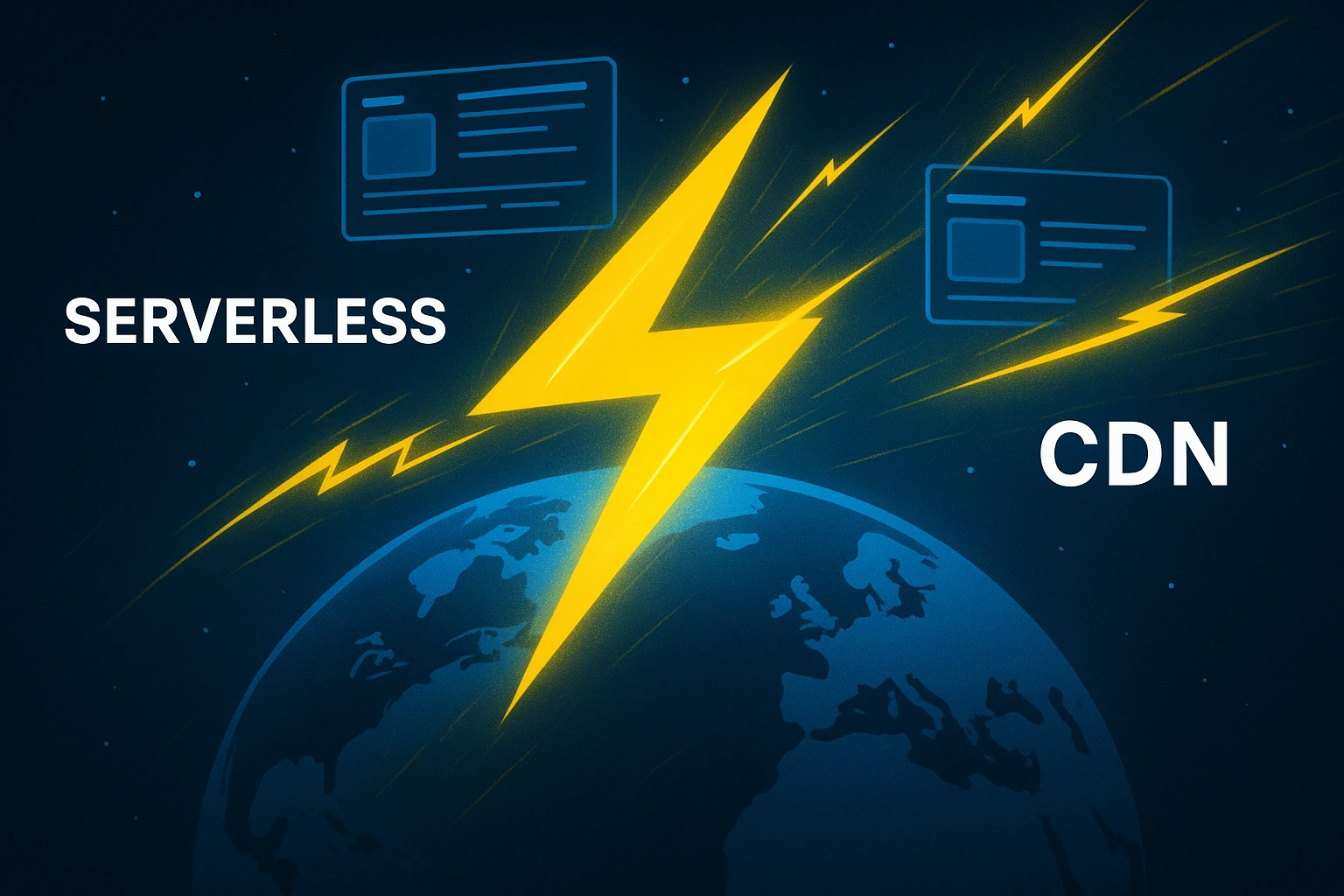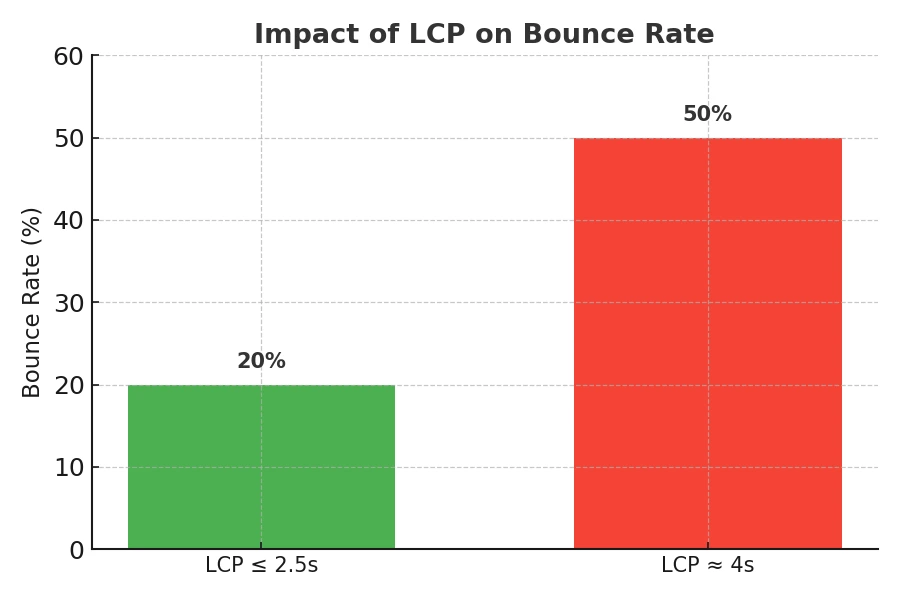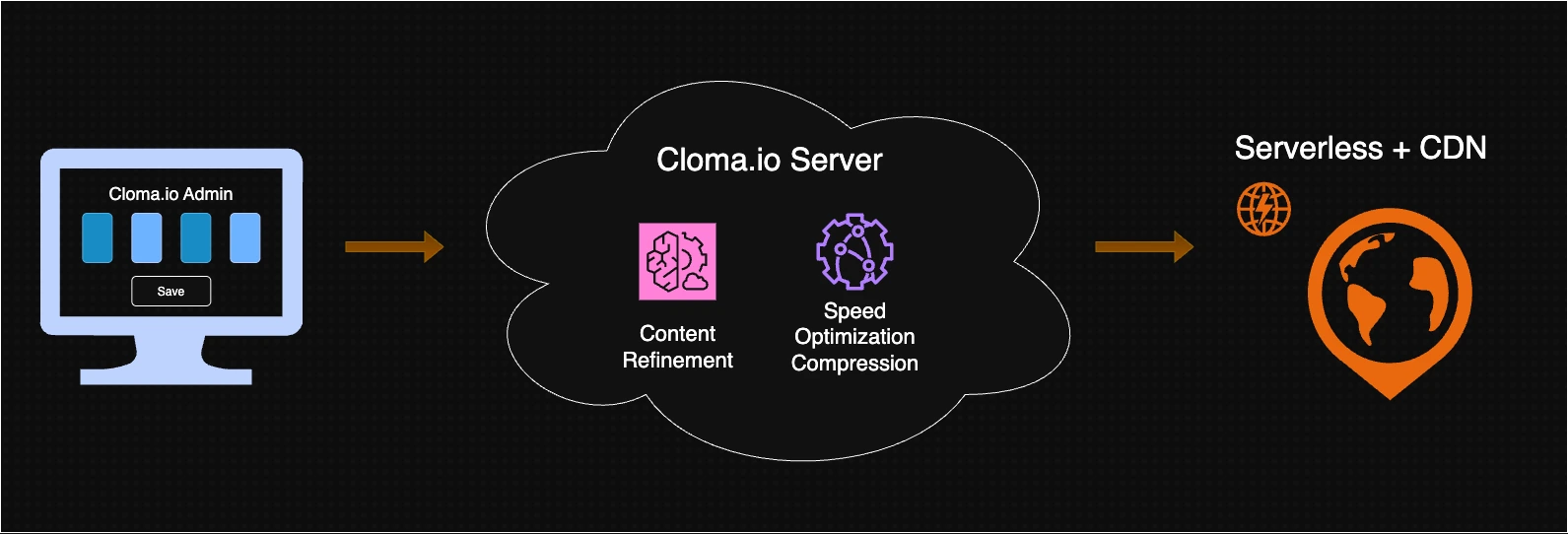How Cloma.io Carousels Deliver Content at Lightning Speed Worldwide

2025.08.15 · Emily Wilson · Cloma.io Team
On the web or in apps, the carousel is often the very first area that captures a visitor’s attention. However, how it is implemented and where the content is loaded from makes a huge difference in loading speed and maintenance efficiency.
Many services rely on either static deployment or dynamic loading via backend servers, but Cloma.io leverages a Serverless + CDN architecture to deliver content at lightning speed across the globe. This ensures that users can experience the carousel instantly, without slowdown, no matter where they are.

📌 Common Ways Carousels Are Operated
Typically, carousels are implemented in one of two ways:
1. Frontend Static Content
- Images and text are directly embedded into the source code and deployed after build.
- Whenever content changes, the process requires code modification → build → deployment.
- This structure is simple, but for frequently updated marketing/event content, fast response is impossible.
2. Admin Console–Based Dynamic Loading
- Content is created/modified via an admin console.
- When users access a page, data is fetched through the path:
Frontend → Backend → Database. - Real-time updates are possible, but server/DB requests inevitably slow down loading.
- Since carousels are directly tied to the LCP (Largest Contentful Paint) metric, delays impact overall page performance.
💡 What is LCP? LCP measures the time it takes for the largest, most meaningful content element on a page to fully render. Google recommends keeping LCP within 2.5 seconds, as exceeding this threshold leads users to perceive the page as slow.
⚠️ Limitations of Traditional Approaches
Although both approaches look straightforward, they present significant challenges in real-world operations. Static deployment requires development and redeployment for every content change, while dynamic loading involves multiple server/database hops, causing latency—especially for global users.
As a result, LCP performance deteriorates, leading to poor user experience, reduced conversions, and negative SEO impact.

👉 For example, if a banner loads late on an e-commerce site, users may bounce before even seeing the products. If an event carousel in an app loads slowly, users may miss out on promotions.
According to Google Web Vital reports, when LCP slows from 2.5s to around 4s, bounce rates increase by over 30% on average, and for e-commerce websites, conversion rates can drop by up to 20%.
To summarize:
- Limitations of Static Content
- Cannot change instantly; requires redeployment.
- Real-time marketing/event response impossible.
- Dynamic Loading Delays
- Unnecessary network round trips via servers.
- Overseas users experience worse latency depending on server location.
- Poor LCP Performance
- Slow carousel loading slows down perceived full-page load.
- Negative effect on conversions and SEO.
🚀 Cloma.io’s Serverless + CDN Architecture
When a user configures a carousel, Cloma.io’s serverless backend sanitizes and compresses all content for immediate use. Images, code, and configuration data are optimized for fast loading and then uploaded to cloud-based object storage. The final assets are distributed globally via a Content Delivery Network (CDN).

- Serverless: Executes only when needed, without always-on servers. → No wasted resources, highly scalable, and cost-efficient.
- CDN (Content Delivery Network): Stores content in multiple global edge locations. → Delivers from the closest server to the user for instant loading.
Cloma.io Process Flow
- User configures and saves carousel via the admin console.
- Cloma.io Server refines and compresses content for optimization.
- Optimized assets are uploaded to cloud object storage.
- Distributed to global CDN edge locations.
- The user’s website loads the carousel instantly from the nearest edge server.
💡 Advantages of This Approach
-
Ultra-Fast Loading Content is served directly from CDN (no DB/server round trips) → Improved LCP and maximum perceived speed.
-
Global Real-Time Updates Changes are reflected worldwide in just seconds.
-
Reduced Server Costs No always-on servers → Lower operational overhead.
-
Handles Traffic Spikes Edge servers respond directly → Stable performance even under massive concurrency.
📈 Real-World Applications
- E-commerce Event Banners: Maintains instant loading even during massive sales.
- Global Product Launches: Provides the same fast experience worldwide.
- Marketing Campaigns: CDN enables fast, time-sensitive promotions.
✅ Conclusion
Carousel performance is not just about design and content. Speed and reliability in content delivery are the real game changers.
Cloma.io’s Serverless + CDN architecture goes beyond the limitations of static or dynamic approaches by providing:
- Consistent speed worldwide
- Improved SEO via better LCP
- Faster marketing/promotional responsiveness
- Cost efficiency and scalability
In short, Cloma.io is not just a carousel tool—it is a growth engine that optimizes global user experience and maximizes business impact.
👉 Experience lightning-fast carousels with Cloma.io today

Emily Wilson · Cloma.io Team
2025.08.15
Tags: #Cloma.io #Carousel #Serverless #CDN #WebPerformanceOptimization #FastLoading
